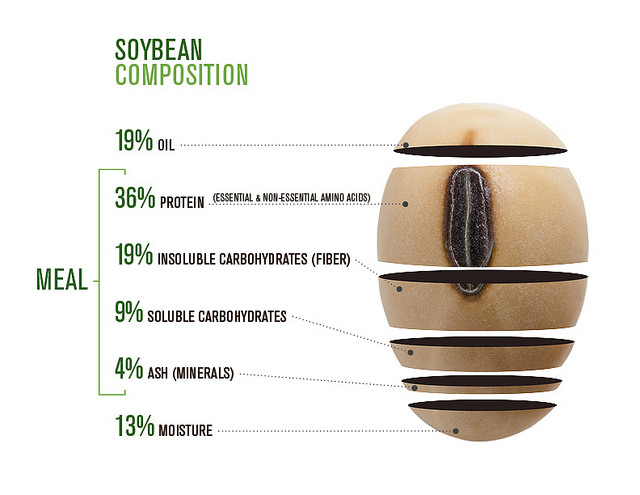Soybean components, including oil, protein, soy protein isolate byproducts, hulls and soy hull cellulose, continue to be incorporated into industrial products as researchers and manufacturers use soy to decrease petroleum dependence, secure a sustainable supply source and make products more environmentally friendly.

Soybean Oil
When soybeans are crushed, they yield almost 20% oil, which goes into the production of products ranging from personal care products to alkyd resins for paints and polyols for foam. Soybean oil has a high lipid content that makes it a beneficial feedstock for specialty fermentation applications.
Researchers in the U.S. soybean industry have developed oilseeds with an increased percentage of oleic acid. High oleic soybean oil (HOSO) is naturally more stable than conventional soybean oil, reducing the need for antioxidants and other expensive additives. HOSO also is more economically modified chemically into synthetic lubricant base stocks, which will compete directly with polyalphaolefins and synthetic esters in lubricant use.
Epoxidized soybean oil is available for use as a plasticizer in polyvinyl chloride (PVC) for bags, food film, medical supplies like blood bags and IV tubing, vinyl sheet goods, sealants, coatings, inks and other applications.
Soy oil-based polymeric surfactant technology offers attractive economics, high biodegradability and the potential for high annually renewable bio-content. Emerging technologies that may affect the increased usage of soy-based surfactants in the future are:
- Increased knowledge in enzymatic processes that are related to fermentation to produce surfactants.
- Increased knowledge in the area of protein-based surfactants to provide functionality.
- Increased knowledge of the oil content to produce fatty-acid components with less unsaturation.
- Process technology improvements for producing surfactants by using microfluidizer technology to prepare more stable emulsions.
- Separation technologies to produce products with fewer impurities, which will increase potential market applications, especially in food and personal care.
Fatty-acid methyl esters can be used as a solvent in cleaning products and a cosolvent when blended with other products such as d-Limonene. Soy-based amide replacements and pre-formulated amide-free surfactant blends provide superior performance such as rich lather, flash foam and mildness in personal care products.
Soybean Meal
The vast majority of soybean meal that is produced when oil is extracted is used to feed livestock, because it is almost half protein. But the other half is mostly indigestible carbohydrates, which can be removed to create protein isolates and concentrates.
The indigestible carbohydrates become the world’s lowest-cost source of sugars for fermentation into fuels and chemicals. A growing percent of soy protein is used to make industrial products like wood adhesives and paper coatings.
Processors located in the Soy Products Guide are available to provide soy-based ingredients to facilitate your research.



